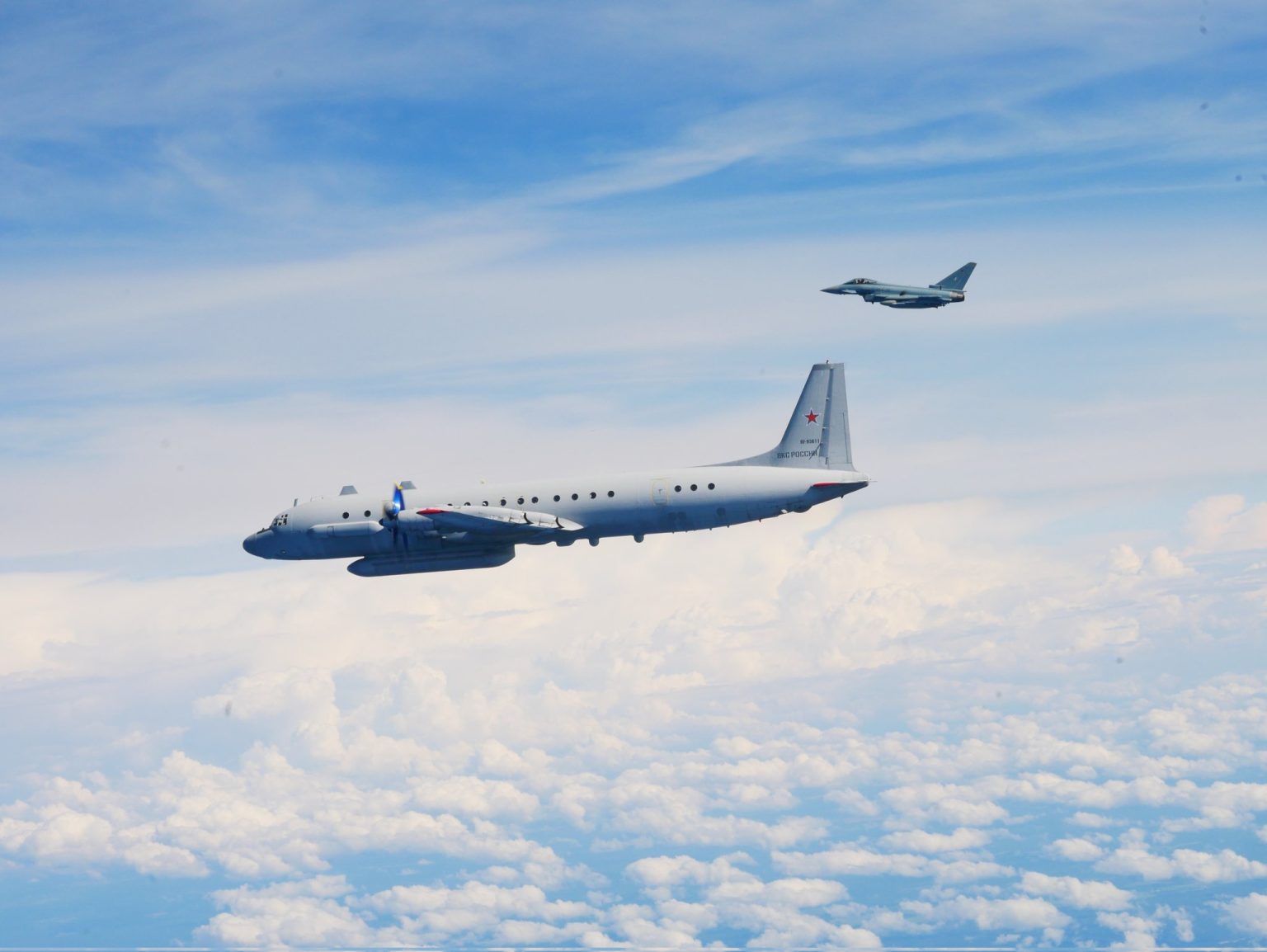NATO members Germany and Sweden intercepted a Russian spy plane that failed to respond to radio communications over the weekend. The German Luftwaffe dispatched a Eurofighter Typhoon from Rostock-Laage Airport to identify and surveil the Soviet-built Il-20M signals intelligence aircraft, which was operating in the Baltic Sea without a flight plan or contact with civil air traffic control. The Russian aircraft, known as Coot-A, gathers text or speech communications as well as electronic intelligence, which can be used for identifying enemy platforms and developing countermeasures. NATO members have been scrambling jets against similar Russian planes in recent weeks, becoming a routine mission for the alliance’s air policing units.
The Baltic Sea is of strategic importance to Russia, despite being nicknamed “NATO Lake” due to Finland and Sweden’s membership in the alliance. The sea allows Russia to reach Kaliningrad and other major ports like St. Petersburg from the Atlantic Ocean. Last month, NATO members observed two Chinese warships using Baltic Sea lines to reach Russia’s shores, without interference. Russian military planes often operate without transponders, masking their locations from civil air traffic organizations, although they enjoy freedom of navigation in international airspace. Russian fighter aircraft sometimes probe NATO airspace and need to be escorted from restricted areas to ensure the safety of civilian air traffic.
Kaliningrad, a Russian exclave and outpost, is intensively surveilled by NATO members who operate out of each other’s air bases. Russian flights near the Baltic states often lead to air encounters, which have increased since Russia’s invasion of Ukraine over two years ago. In mid-July, footage captured from the cockpit of a Russian Su-30SM fighter jet showed a close encounter with Spanish EF-18A Hornets in the Baltic Sea. Spanish and Portuguese fighter aircraft deployed to Lithuania’s Siauliai air base as part of their contribution to NATO air policing missions. The aerial encounters highlight the tensions and monitoring efforts in the Baltic region between Russia and NATO members.
The interception of the Russian spy plane by German and Swedish fighter jets is part of a broader pattern of NATO members monitoring and responding to Russian military activities near their territories. Russian military aircraft, including intelligence-gathering platforms, often operate close to NATO airspace, prompting responses from allied forces. The intense surveillance of Kaliningrad and the Baltic Sea reflects the strategic significance of these areas for both Russia and NATO. The close encounters between Russian and NATO aircraft demonstrate the ongoing tensions in the region, exacerbated by Russia’s assertive military posture and NATO’s efforts to safeguard its borders and airspace.
The Il-20M spy plane intercepted by the German and Swedish fighter jets is equipped to gather a wide range of intelligence, including text, speech communications, and electronic signals. This information is crucial for identifying potential threats and developing countermeasures against enemy platforms. The routine scrambling of NATO fighter jets in response to Russian military activities underscores the alliance’s commitment to monitoring and safeguarding its borders and airspace. Despite the somewhat routine nature of these intercept missions, they highlight the ongoing security challenges in the Baltic region and the need for continued vigilance from NATO members.
In conclusion, the interception of the Russian spy plane by German and Swedish fighter jets over the Baltic Sea is a vivid example of the ongoing tensions and security challenges in the region. The surveillance and response to Russian military activities near NATO airspace underscore the alliance’s commitment to safeguarding its borders and airspace. The strategic significance of the Baltic Sea and Kaliningrad for both Russia and NATO adds another layer of complexity to the security dynamics in the region. The frequent aerial encounters between Russian and NATO aircraft highlight the ongoing security risks and the need for continued vigilance and cooperation among alliance members.


